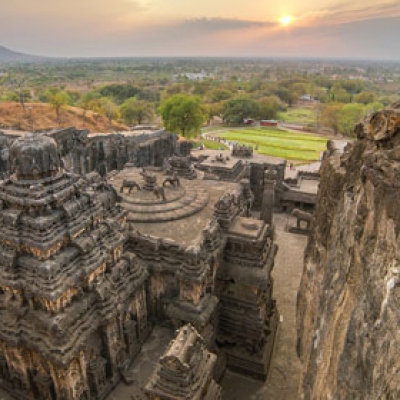
Ajanta And Ellora Caves
Ajanta and Ellora Caves are world-famous UNESCO World Heritage Site in India for its paintings and sculptures. While Ajanta Caves are full of Buddhist paintings, Ellora Caves are a combination of Buddhist, Hindu, and Jain paintings and carvings.
Ajanta And Ellora Caves - Maharashtra - North India
Speciality
The amount of creativity shown using vegetable colours and natural dyes in the walls of Ajanta and Ellora Caves are masterpiece. The world can learn religious tolerance, freedom of expression, and artistic innovation visiting the creations of Ajanta and Ellora Caves.
History of Ajanta And Ellora Caves?
From the 2nd century BCE to 480 CE, the 30 rock-cut structures of Ajanta Caves are made. A combination of Viharas (monasteries) and Chaityas (prayer halls). Jataka Tales and life of Gauthama Buddha are important depictions.
Ellora Caves is famous for its 16th Cave having the largest monolith temple in the world, Kailasa Temple and Cave 15 - Dashavatara having the 10 avatars of Lord Vishnu. The marvels of hammers and chisels did in the past still illuminates in the dark. Paintings of Ajanta and structural beauty of Ellora are incomparable ancient art of India. One of the must-visit places in India
Entry/Darshan Time:
Ajanta Caves is open from 9.00 am to 5.30 pm except on Mondays. Ellora Caves in open from sunrise till sunset except on Tuesdays.
Dress Code:
No specific dress code is required. Plan according to the season but prefer sandals and flip-flops as it is easy to wear and remove before entering each cave. Carrying a torch is a good idea or your phone flash is more than enough.
Festivals
During the month of October, Soneri Mahal of Aurangabad gears up for the Ellora Ajanta Festival. Classical dancers and musicians from around the country participate to tell the history and heritage of Aurangabad and its surrounding monuments for three days.